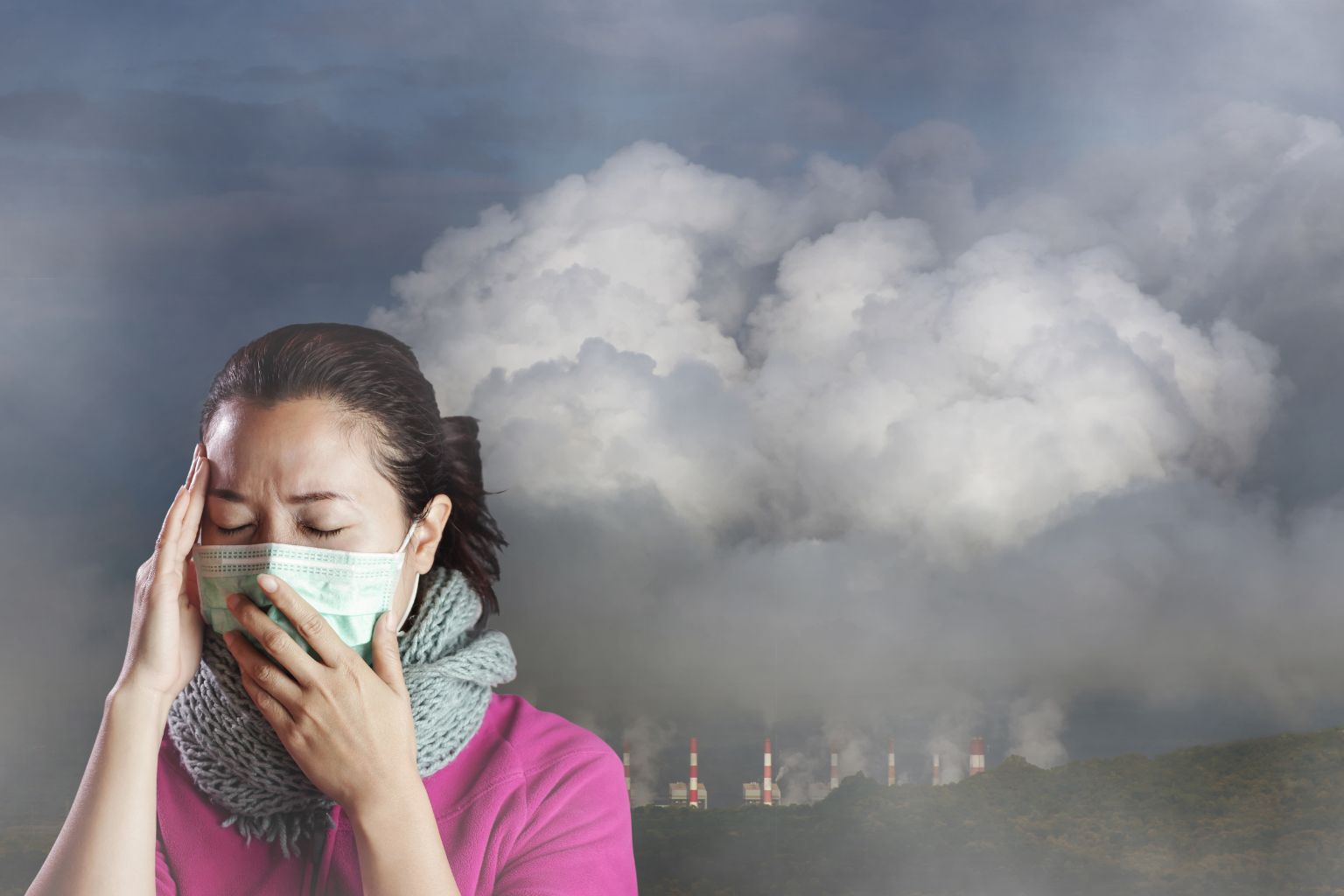Uttarakhand’s Air Quality Crisis: Addressing Pollution for a Breath of Fresh Air

Urbanization in Uttarakhand is increasing at a rapid rate and so is the industrial activity, vehicular population, etc. This has led to various environmental problems such as water pollution, air pollution, and soil pollution. Out of all this Uttarakhand is currently majorly suffering from air pollution. Various contaminants are present in the atmosphere which enter through man-made and natural processes and such contaminants enter into the environment causing various diseases, toxicity, and environmental decay. Such types of contaminants which deteriorate the environment are referred to as pollutants. In air pollution, pollutants can be present in either gaseous, liquid or solid state. These tend to cause serious harmful health-related effects to living animals, plants, and human beings. Environmental awareness is essential for controlling the level of air pollution. This article highlights the effect of air pollution in major cities of Uttarakhand and how the government is tackling it.
Understanding the cause of air pollution
The state of Uttarakhand is nestled between the magnificent Himalayas. But this state is continuously facing problems due to increasing air pollution. Once this state was known for breathtaking landscapes and pristine air but it is now dealing with alarming levels of air pollutants which is a major threat to both human health and the environment. Despite the rise in pollution in the state, many trees are being destroyed daily by public administration for developmental projects. As per the reports by the Uttarakhand State of Environment with the increase in urbanization, industrialization, construction work, and population the level of air pollutants has increased rapidly in the state. All these factors contribute to the air quality crisis in Uttarakhand.
Vehicular emission: Increased traffic and tourism in cities like Nainital and Dehradun have significantly increased the number of pollutants in the air.
Industrial activities: Stone crushers, and brick kilns are some of the industries which contribute towards harmful pollutants in the air.
Biomass burning: The agricultural practices which involve burning crop waste are one of the major causes of the rise in air pollution specifically during the spring season.
Forest fires: Many times, uncontrolled wildfires especially during summer seasons cause an increase in air pollutants.
Current state of India’s air pollution crisis
As per the data from the World Air Quality Report, India is ranked as the 8th most polluted nation globally in the year 2023. Among these Delhi is ranked as the most polluted state for 5th year consecutively. This report also revealed that out of 50 polluted cities, globally there are 39 cities of India ranked in the top 50.
Current state of air pollution in Uttarakhand
As per the data by the Uttarakhand Pollution Control Board the AQI of Rishikesh, Dehradun, Haridwar, Haldwani and Kashipur was last reported to be 148, 172, 171, 127 and 154 respectively. Almost all major cities of Uttarakhand have very high air quality index. If the air quality index is between 100 to 200 then it is known as poor quality. Whereas more than 200 to 300 is injurious to health and more than 300 AQI is extremely dangerous. Dehradun is one of the most populated cities of Uttarakhand consecutively for the second year. This is because of increasing construction activity and vehicular traffic. The major reason for increasing air pollution in Dehradun is that this state is surrounded by valley which traps air pollutants coming from surrounding areas thus increasing the problem. In the years 2021 and 2022, the level of PM 2.5 in Dehradun was measured to be around 48.65 µg/m3 & 45.88 µg/m3. CPCB or Central Pollution Control Board recommended that this is quite concerning for the public as the World Health Organisation (WHO) states that PM 2.5 should be around 5 µg/m3 or less. If it is more it is dangerous for health. PM2.5 particles can easily get deep inside the lungs because they are so small. This can result in various respiratory-related disorders. Moreover, older people, children, people with lung and heart problems and pregnant women are more prone to being affected by higher levels of fine particles in the air. Some individuals can even develop symptoms such as wheezing, difficulty in breathing and chest tightness. The source of PM2.5 particles can be many including burning coal, organic matters like grass and wood and other materials like plastic and rubber. Apart from this carbon emissions from power plants, wildfires and motor vehicles are major sources of many fine particles in the air.
Apart from this another city of Uttarakhand is facing issues due to rising air pollution this state is one of the most famous destinations for tourists- Haridwar. The air pollution in the beautiful city of Haridwar is rising rapidly due to the increasing number of tourists every year. Furthermore, the constant increase in industrial effluents, forest fires and stubble burning has also increased the level of air pollution. Due to a very unusual pattern of weather conditions in Haridwar, it is becoming very hotter during May and June. The higher level of PM 2.5 is the main reason for respiratory problems in people. Many recent reports have revealed that higher level of PM 2.5 causes chronic respiratory diseases in humans. This particle is considered as deadliest air component.

Impact of air pollution
Uttarakhand is covered with 38,000 sq km of lush green forest which constitutes about 71% of the geographical area. Uttarakhand is a state where most people live close to forest or nature. Their lives are linked to the environment. Thus, this close proximity between the state and the environment has created various challenges, especially major environmental-related problems. The increasing level of air pollution has various adverse effects on the environment. Some of these include:
Respiratory problems: The increasing cases of bronchitis, asthma and other illnesses have been largely caused due to air pollution. Tourist destination like Haridwar, Rishikesh, Nainital and Dehradun has millions of visitors every year travelling by government transport and their vehicles. This increase in the number of visitors and vehicles generates a large amount of harmful pollutants in the air that cause serious threats to visitors. This also affects people living in nearby areas.
Reduced visibility: Particulate matter and smog can result in lower visibility which can affect transportation and tourists visiting the state.
Environmental degradation: The increasing rate of air pollution causes significant damage to the ecosystem largely affecting animal and plant life. Although the government has taken an air action plan which aims to develop Greenbelt across the state, it has been observed that instead of growing more trees large number of trees are being cut down by the authorities. It has been reported that 87 Hectares of forest containing 9000 trees have been cut down for airport expansion. Many studies have been conducted on Thano Forest. One of them revealed that the level of carbon stock in these forests is around 684 mg – 1668 mg/ hectare. This adds to around 37% of carbon emissions in Dehradun city.
Possible solutions for controlling air pollution
To decrease the level of air quality index in India, the government has formulated the Air Prevention and Control of Pollution Act. This was done back in the year 1981. After this many changes were made in this act further emphasising environmental protection in 1986. Thus, it is important to assess much anticipated and present air pollution via monitoring programs and air quality management surveys. An inventory containing all the information about air pollutants is the first step for controlling the level of air pollution. Air pollution can be caused by two different factors one is natural and the other is through anthropogenic activities such as industrial emissions. Furthermore, these pollutants are primary and secondary. It depends on their mechanism of formation. The primary pollutants originate from a direct source. On the other hand, secondary pollutants are mainly formulated in the environment. Once the pollutants are classified it becomes easier to understand how to mitigate each type of pollutant. The government has already implemented many strategies for controlling the level of pollution. However, controlling the level of air pollution requires multifaceted strategies. Some of which has been listed below:
Sustainable transportation: Encouraging the use of electric vehicles and public transport helps in reducing air pollutants. Control over private vehicles is one of the first and major steps for reducing the level of environmental pollutants. Additionally, congestion tax can be applied to owners of private cars, especially at the time of peak hours.
Strict regulations: The government should enforce strict regulations on construction activities and industries. Controlling the construction activities in certain areas of Uttarakhand can largely help to reduce the level of air pollution and it can also help to reduce the rate of deforestation in the state.
Public awareness programs: Educating people about the consequences and causes of air pollution through public awareness programmes is important to promote behavioural changes. Plantation drives can be conducted to increase awareness.
Final Verdict
The air quality of Uttarakhand demands collective action to be taken by citizens and the government to improve the quality of air. By focusing upon initiatives on providing clean air we can protect natural beauty and public health. This helps to ensure sustainable development for future generations.
